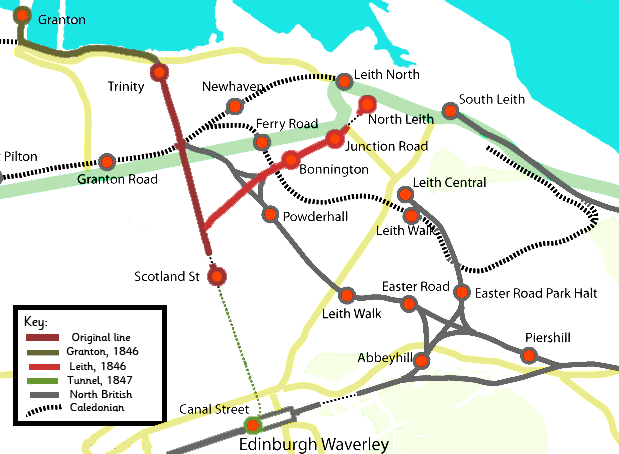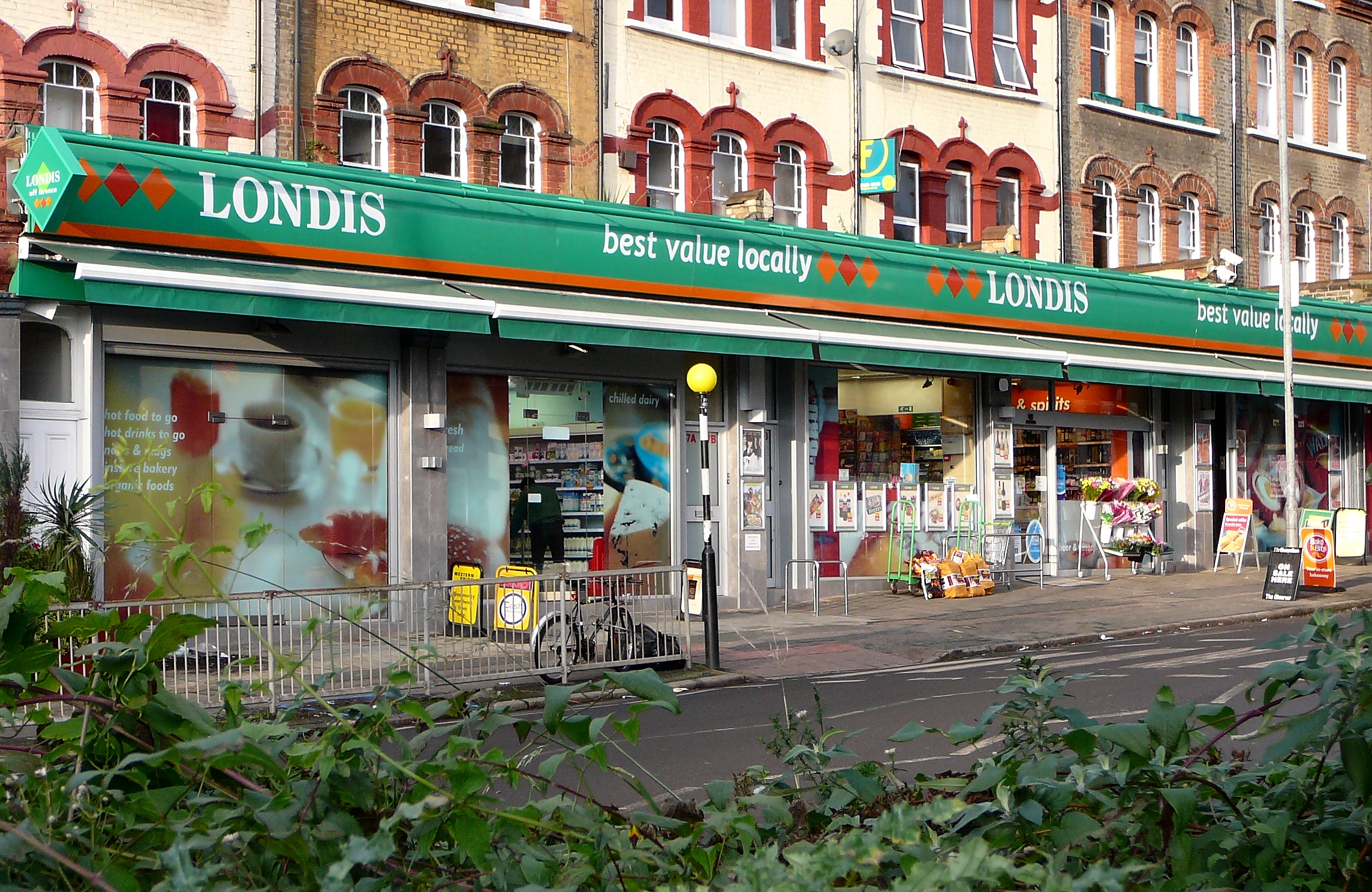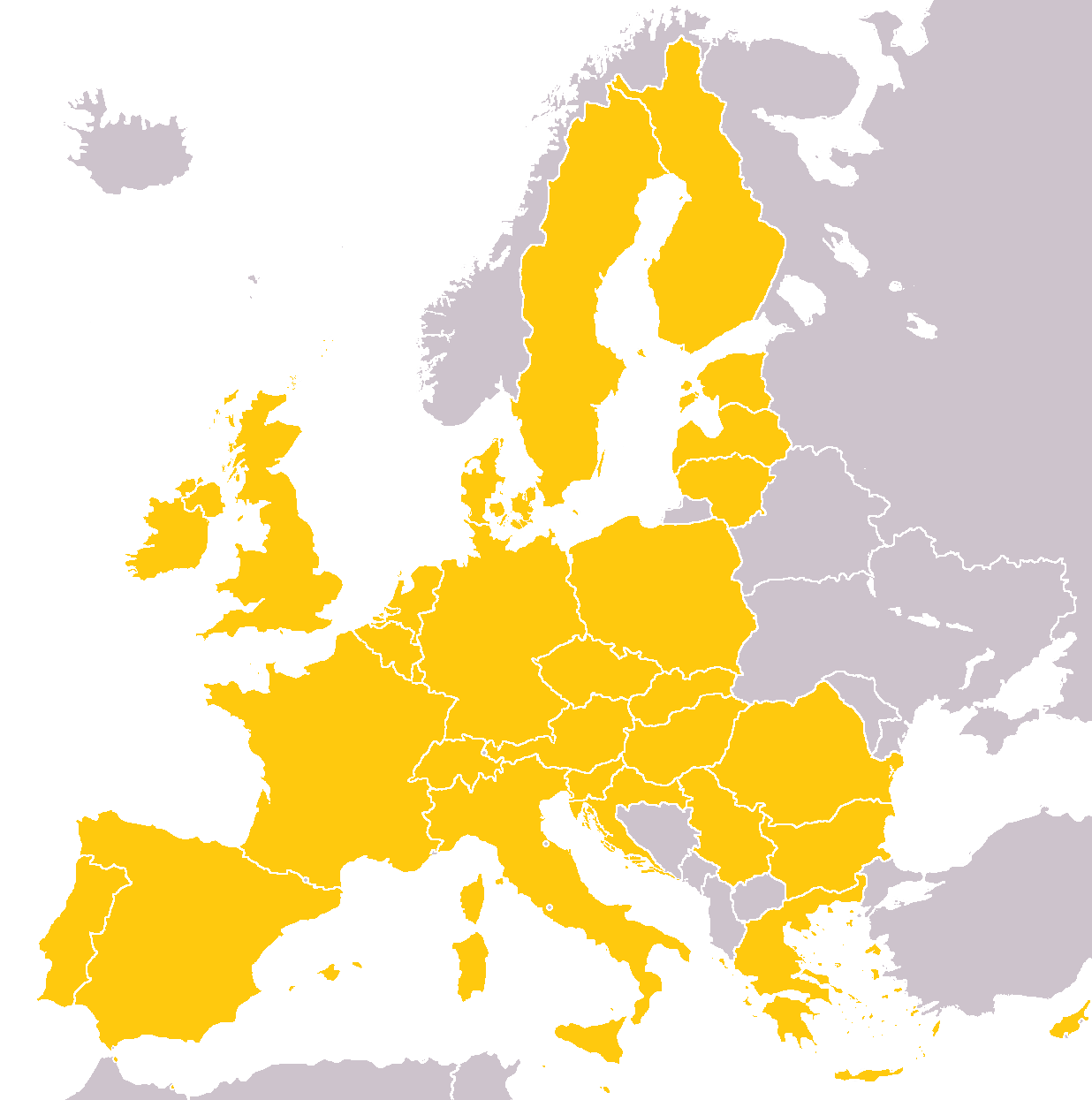|
New Stevenston
New Stevenston is a village situated between Motherwell and Bellshill in North Lanarkshire, Scotland. Most local amenities are shared with the adjacent villages of Carfin, Holytown and Newarthill which have a combined population of around 20,000 across the four localities. History The settlement first formed as part of the parish of Holytown when substantial coal workings were being exploited during the 19th century. The village prospered and so when the Church of Scotland suffered Disruption in 1843 the new Free Church was constructed in New Stevenston or Wrangholm to serve the mining community. With the decline of coal mining and the rise of the steel and heavy engineering industries, the bulk of the population were employed until the serious industrial decline of the late 20th century, culminating in the closure of the Ravenscraig steelworks in 1992. Employment has shifted towards more diverse occupations and housing development has continued. There has been significan ... [...More Info...] [...Related Items...] OR: [Wikipedia] [Google] [Baidu] |
North Lanarkshire
North Lanarkshire ( sco, North Lanrikshire; gd, Siorrachd Lannraig a Tuath) is one of 32 council areas of Scotland. It borders the northeast of the City of Glasgow and contains many of Glasgow's suburbs and commuter towns and villages. It also borders East Dunbartonshire, Falkirk, Stirling, South Lanarkshire and West Lothian. The council covers parts of the traditional counties of Dunbartonshire, Lanarkshire and Stirlingshire. The area was formed in 1996, from the districts (within Strathclyde region) of Cumbernauld and Kilsyth, Motherwell, and Monklands, as well as part of the Strathkelvin district ( Chryston and Auchinloch), which operated between 1975 and 1996. As a new single-tier authority, North Lanarkshire became responsible for all functions previously performed by both the regional council and the district councils. History The largest part of North Lanarkshire, in the south of the county, has its roots in the historic county of Lanarkshire, which has existed ... [...More Info...] [...Related Items...] OR: [Wikipedia] [Google] [Baidu] |
Strathclyde Region
Strathclyde ( in Gaelic, meaning "strath (valley) of the River Clyde") was one of nine former local government regions of Scotland created in 1975 by the Local Government (Scotland) Act 1973 and abolished in 1996 by the Local Government etc. (Scotland) Act 1994. The Strathclyde region had 19 districts. The region was named after the medieval Kingdom of Strathclyde but covered a broader geographic area than its namesake. Functions The area was on the west coast of Scotland and stretched from the Highlands in the north to the Southern Uplands in the south. As a local government region, its population, in excess of 2.5 million, was by far the largest of the regions and contained half of the nation's total. The Region was responsible for education (from nursery to colleges); social work; police; fire; sewage; strategic planning; roads; transport – and, therefore, employed almost 100,000 public servants (almost half were teachers, lecturers and others in the education ... [...More Info...] [...Related Items...] OR: [Wikipedia] [Google] [Baidu] |
M8 Motorway (Scotland)
The M8 is the busiest motorway in Scotland and one of the busiest in the United Kingdom. It connects the country's two largest cities, Glasgow and Edinburgh, and serves other large communities including Airdrie, Coatbridge, Greenock, Livingston and Paisley. The motorway is long. A major construction project to build the final section between Newhouse and Baillieston was completed on 30 April 2017. The motorway has one service station, Heart of Scotland Services, previously named Harthill due to its proximity to the village. History With the advent of motorway-building in the United Kingdom in the late 1950s, the M8 was planned as one of a core of new motorways, designed to replace the A8 road as a high-capacity alternative for intercity travel. The motorway was constructed piecemeal in several stages bypassing towns, beginning in 1965 with the opening by Minister of State for Scotland George Willis of the bypass of Harthill. In 1968 the Renfrew Bypass was opened ... [...More Info...] [...Related Items...] OR: [Wikipedia] [Google] [Baidu] |
A723 Road
A7, A.7, A 7, A07 or A-7 may refer to: Arts and entertainment Music * A7, the A dominant seventh chord used in many rock songs, see dominant seventh chord * A (musical note) * ''A7'' (mixtape), by SCH, 2015 * Avenged Sevenfold, a hard rock/metal band Radio stations * Arutz Sheva, an Israeli radio station meaning Channel Seven Electronics and software * A7, a type of stereoautograph * Altec Lansing A-7, a speaker * Apple A7, a system on a chip used first in the iPhone 5S * ARM Cortex-A7, a processor in the ARM Cortex-A processor family * Samsung Galaxy A7, a smartphone * Sony α7, a family of full-frame mirrorless interchangeable-lens cameras. Military Equipment * A-7 (transceiver), a Soviet VHF radio transceiver developed during World War II * Skoda 37 mm A7, a tank gun produced before and during World War II by the Skoda Works Groups * A7 (Artillery Regiment) * A7, the military staff designation in the continental staff system for air force headquarters staff concerned with ... [...More Info...] [...Related Items...] OR: [Wikipedia] [Google] [Baidu] |
Edinburgh Waverley Railway Station
Edinburgh Waverley railway station (also known simply as Waverley; gd, Waverley Dhùn Èideann) is the principal railway station serving Edinburgh, Scotland. It is the second busiest station in Scotland, after Glasgow Central. It is the northern terminus of the East Coast Main Line, from , although some trains operated by London North Eastern Railway continue to other Scottish destinations beyond Edinburgh. Location Waverley station is situated in a steep, narrow valley between the medieval Old Town and the 18th century New Town. Princes Street, the premier shopping street, runs close to its north side. The valley is bridged by the North Bridge, rebuilt in 1897 as a three-span iron and steel bridge, on huge sandstone piers. This passes high above the station's central section, with the greater half of the station being west of North Bridge. The central booking hall is just west of the northern massive stone pier of the bridge and cleverly hides it within its bulk. Wa ... [...More Info...] [...Related Items...] OR: [Wikipedia] [Google] [Baidu] |
Glasgow Central Railway Station
, symbol_location = gb , symbol = rail , image = Main Concourse at Glasgow Central Station.JPG , caption = The main concourse , borough = Glasgow, City of Glasgow , country = Scotland , coordinates = , grid_name = Grid reference , grid_position = , manager = Network Rail , platforms = 17 (including 2 on lower level) , code = GLC , zone = G2 , transit_authority = SPT , years = 1 August 1879 , events = High Level Station openedButt (1995), page 103 , years1 = 10 August 1896 , events1 = Low Level Station opened , years2 = 1901–1905 , events2 = High Level Station rebuilt , years3 = 1960 , events3 = Re-signalling , years4 = 5 October 1964 , events4 = Closure of Low Level Station , years ... [...More Info...] [...Related Items...] OR: [Wikipedia] [Google] [Baidu] |
Holytown Railway Station
, symbol_location = gb , symbol = rail , image = Holytown railway station, Lanarkshire (geograph 3916466).jpg , borough = New Stevenston, North Lanarkshire , country = Scotland , coordinates = , grid_name = Grid reference , grid_position = , manager = ScotRail , platforms = 2 , code = HLY , years = 1 June 1880 , events = Opened as Carfin , years1 = 1 January 1882 , events1 = Renamed Carfin Junction , years2 = 1 June 1882 , events2 = Renamed Holytown Junction , years3 = 1 October 1901 , events3 = Renamed Holytown , mpassengers = , footnotes = Passenger statistics from the Office of Rail and Road Holytown railway station is a railway station serving both Holytown and New Stevenston in North Lanarkshire, Scotland. It is located on t ... [...More Info...] [...Related Items...] OR: [Wikipedia] [Google] [Baidu] |
Londis (United Kingdom)
Londis is a symbol group in the United Kingdom with over 2,000 stores nationwide. Tesco plc owns the brand, following its 2018 purchase of Booker Group.https://www.economicsonline.co.uk/business_economics/tesco_buys_booker.html/ Although it was formerly a subsidiary, the Londis (Ireland), Londis brand in Ireland is no longer related to Londis (UK). Etymology The name Londis is a contraction of "London District Stores". History Foundation Londis was established in Great Britain in 1959 by Kevin Stanley Adams as a communally owned company, with each retailer owning a share in the parent company. Acquisition by Musgrave Group However, in June 2004, the parent company was sold to the Irish Musgrave Group, Musgrave wholesale chain with a payment of £31,000 being made to each retailer who owned a stake, bringing it under the same ownership as Budgens, which has now adopted a similar franchise based business model. This acquisition proved controversial, with the CEO of Musgrave in ... [...More Info...] [...Related Items...] OR: [Wikipedia] [Google] [Baidu] |
Lidl
Lidl Stiftung & Co. KG (; ) is a German international discount retailer chain that operates over 11,000 stores across Europe and the United States. Headquartered in Neckarsulm, Baden-Württemberg, the company belongs to the Schwarz Group, which also operates the hypermarket chain Kaufland. Lidl is the chief competitor of the similar German discount chain Aldi in several markets. There are Lidl stores in every member state of the European Union as well as in Serbia, Switzerland, the United Kingdom and the United States. In October 2021, Lidl also announced that it intended to open its first store in Ukraine, but there has been no progress due to the 2022 Russian invasion of Ukraine. History In 1932, Josef Schwarz became a partner in Südfrüchte Großhandlung Lidl & Co., a fruit wholesaler, and he developed the company into a general food wholesaler. In 1977, under his son Dieter Schwarz, the Schwarz-Gruppe began to focus on discount markets, larger supermarkets, a ... [...More Info...] [...Related Items...] OR: [Wikipedia] [Google] [Baidu] |
Co-operative
A cooperative (also known as co-operative, co-op, or coop) is "an autonomous association of persons united voluntarily to meet their common economic, social and cultural needs and aspirations through a jointly owned and democratically-controlled enterprise".Statement on the Cooperative Identity. '' International Cooperative Alliance.'' Cooperatives are democratically controlled by their members, with each member having one vote in electing the board of directors. Cooperatives may include: * businesses owned and managed by the people who consume their goods and/or services (a ... [...More Info...] [...Related Items...] OR: [Wikipedia] [Google] [Baidu] |
Mossend
Mossend is a small town in North Lanarkshire, Scotland, located on the A775 road to the immediate east of its 'sister town' Bellshill, west of the villages of Holytown and New Stevenston, north of the larger town of Motherwell and south of the Eurocentral industrial park and the M8 motorway. Along with Holytown, it forms a council ward which had a population of 13,480 in 2019, Mossend's estimated population being around half of that total. The town is the site of two railway freight terminals: Mossend International Railfreight Park and Mossend EuroTerminal. The yard is primarily used by DB Cargo UK. Mossend formed around the steel industry, with Clydesdale Steel Works once dominating the east end of the town. It is also home to the Mossend Football Club, a local community football club for children from the age of 6 to 21 years old. Early map references Mossend first appears on an early Timothy Pont map at the end of the 16th century as Mossid (Moss-Side), but the name mo ... [...More Info...] [...Related Items...] OR: [Wikipedia] [Google] [Baidu] |
Christian Brethren
The Open Brethren, sometimes called Christian Brethren, are a group of Evangelical Christian churches that arose in the late 1820s as part of the Assembly Movement within the Plymouth Brethren tradition. They originated in Ireland before spreading throughout the British Isles, and today they have an estimated 26,000 assemblies worldwide. The Open Brethren form independent, autonomous assemblies and the name "Open" is given to them to distinguish them from "Exclusive Brethren", with whom they share historic roots. The division of the Plymouth Brethren into the Open Brethren and the Exclusive Brethren took place in 1848. Open Brethren are also commonly known as "Plymouth Brethren", especially in North America. Many Open Brethren outside North America, however, are unwilling to use the "Plymouth Brethren" designation because it is associated with the Exclusive Brethren, particularly the Plymouth Brethren Christian Church, which is known for its rigid interpretation of the doctrine o ... [...More Info...] [...Related Items...] OR: [Wikipedia] [Google] [Baidu] |

_Central_Station%2C_Glasgow.jpg)



